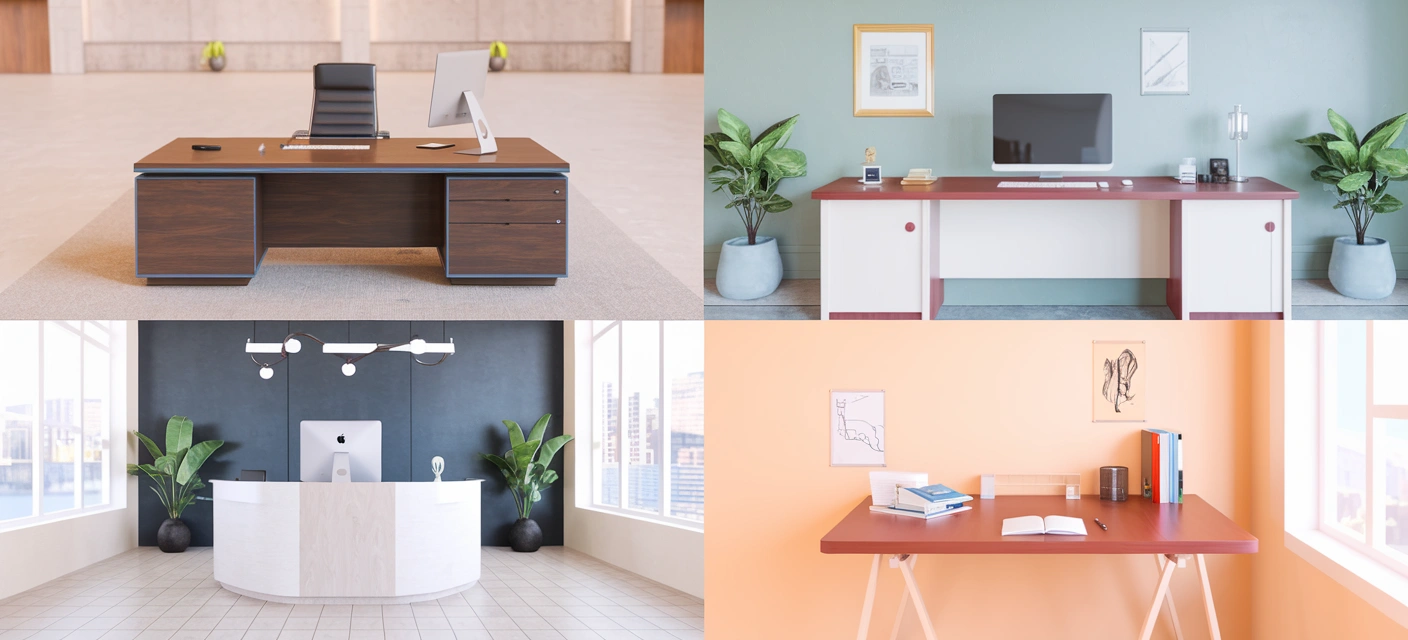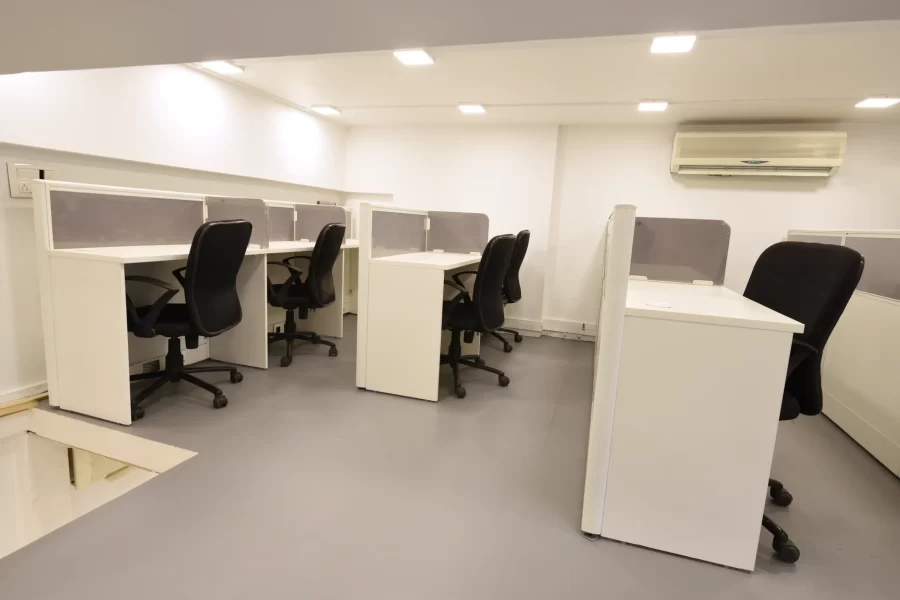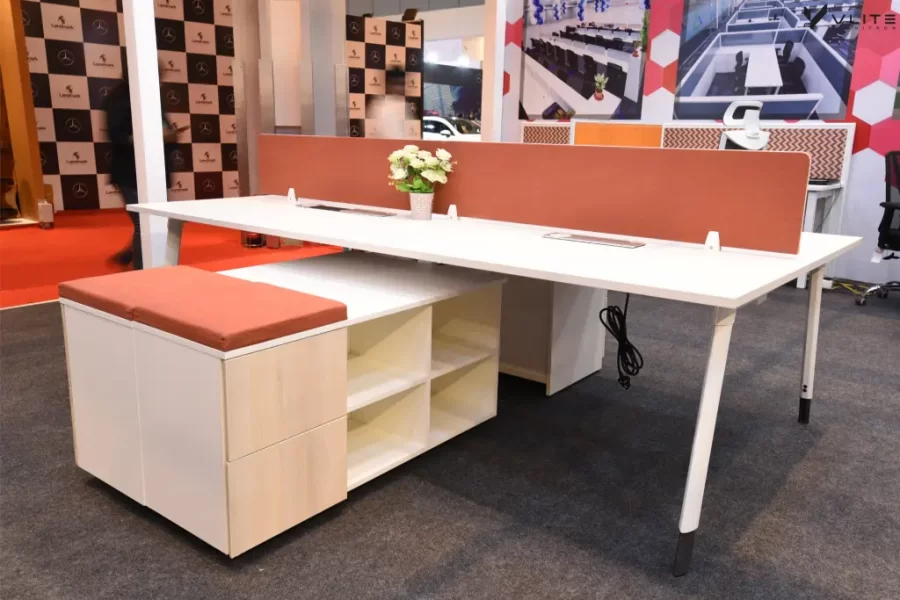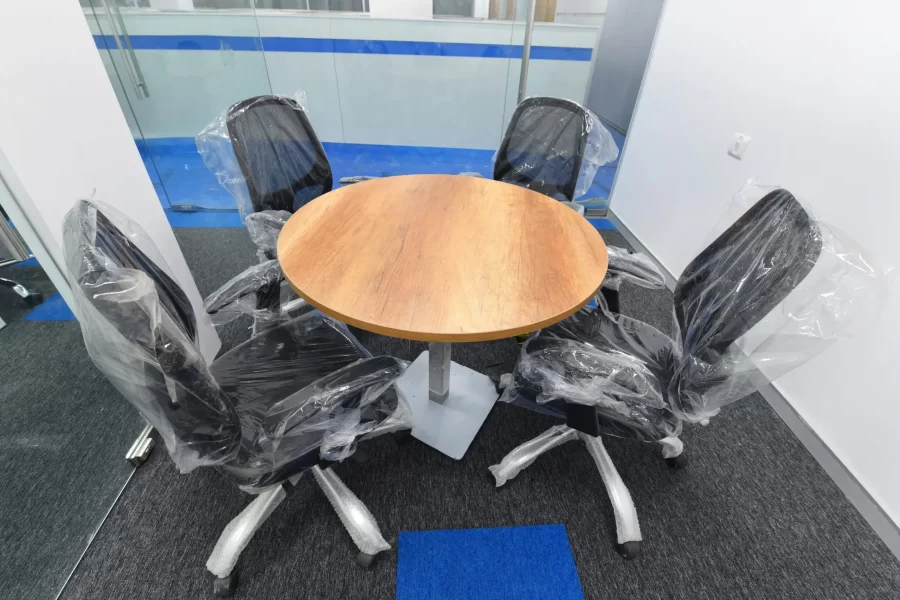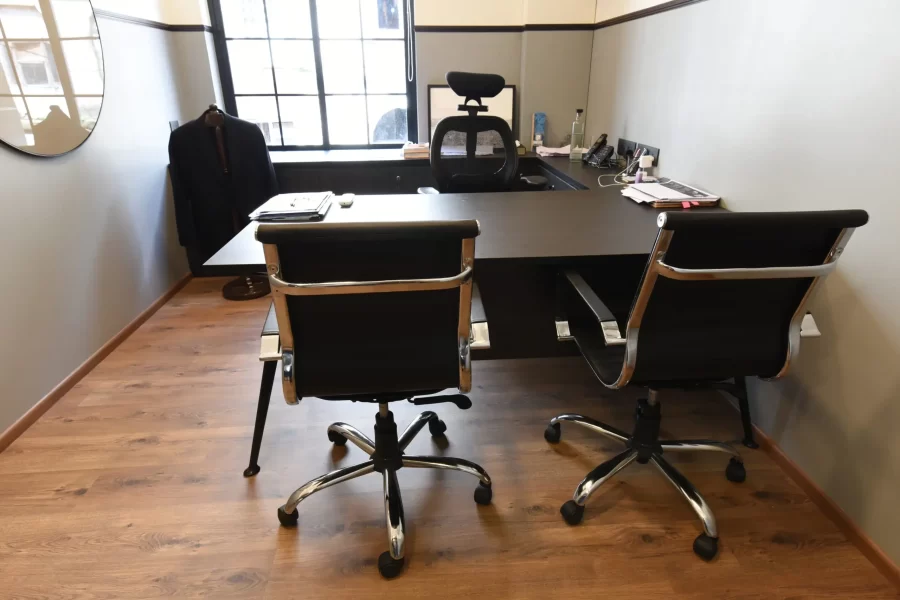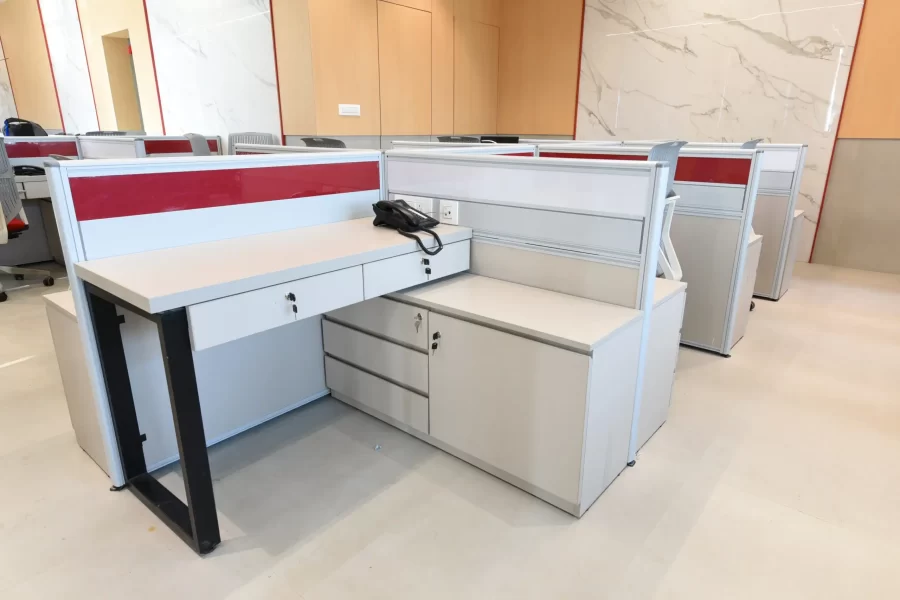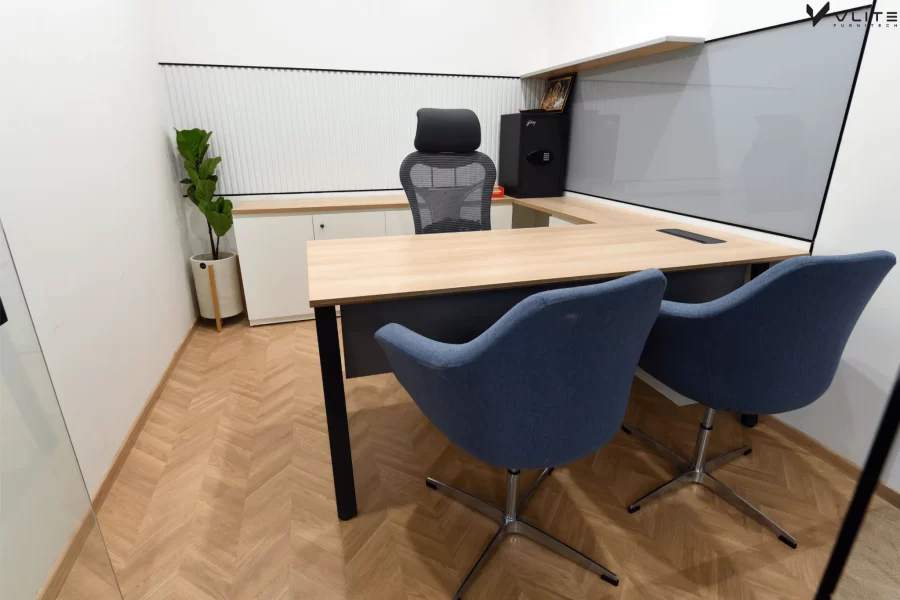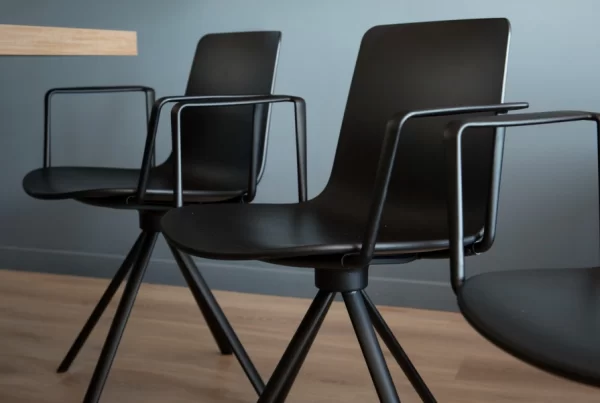In the current corporate landscape, people spend hours sitting at their desks. But it’s a fact that sitting for long hours causes discomfort or even bodyache if the seating arrangement is not ergonomic and comfortable. One major cause of discomfort and inefficiency is desk depth, a factor that’s often overlooked when setting up a workspace.
The right desk depth is important for creating an ergonomic workplace that promotes good posture and minimizes strain on the body. In this article, you will learn about what is desk depth, standard desk depth, how it impacts your daily routine, and how to select the right dimensions to enhance comfort and efficiency for various work needs. Let’s start!
What is Desk Depth and Why is it Important?
The distance from the front to back edge of a desk is desk depth. It is an essential factor to create a productive workplace. The standard desk depth is usually 20-30 inches (50-76 cm). Desk depth is significant to maintain your posture and determine how you can arrange the computer, keyboard, and other documents on the desk.
If the desk depth is low, you may feel cramped in the insufficient space. If the desk depth is deep you need to stretch uncomfortably and it will strain your back and shoulders. The right desk depth keeps everything within your reach. It helps to maintain proper posture of the body, avoid strain and keep you comfortable.
Factors Affecting Desk Depth Choices
- Intended Purpose: The most important consideration while looking for the right desk depth is its use, available space and personal preferences. For everyday comfort and functionality, office desk depth matters. A compact design is suitable for study desk depth, while the computer desk dimensions will vary depending on the devices used, such as monitors, keyboards, printers, and other tech equipment.
- Available Space: Space is another factor while choosing desk depth. Compact space may limit the desk depth but in large space, more depth of the desk can accommodate work essentials and make the space clutter free.
- User Preferences and Needs: Some users may require a deeper desk for multiple monitors with storage units to keep documents. A deeper desk keeps the space organized and maintains comfort and functionality.
Standard Desk Depths for Different Purposes
| Desk type | Recommended Depth | Purpose |
| Office Desk | 24-30 inches | This office desk depth is ideal in most setups. It balances the space for paperwork and equipment and ergonomically it is comfortable for monitor and keyboard position. |
| Computer Desk | 24-36 inches | This depth of the computer desk is ideal for providing a comfortable view of the monitor and has adequate space to keep keyboard, mouse and accessories. |
| Reception Desk | 30-36 inches | This depth of reception desk is required for guest interaction and paperwork. It offers enough space for a phone, some documents and a computer and keeps the surface welcoming. |
| Study Desk | 18-24 inches | Home study table depth between 18-24 inches is good for students to keep books, some stationary or papers with a sufficient writing area. |
Other Essential Office Desk Dimensions
Desk depth is necessary for functionality in any space but other office desk dimensions are also important for a well-planned ergonomic workplace. Let us take a look at the dimensions in office space-
- Width: The width of any desk depends on its setup purpose and space available to keep it. The typical width of an office desk is from 48-72 inches. This width provides ample space for computer, office tools and documents. The study table is 36-48 inches to fit in small spaces.
- Height: The standard desk height for all users is typically 28-30 inches. For ergonomic comfort adjustable desks allowing sitting and standing positions are preferred.
- Chair Clearance: For comfortable sitting, sufficient legroom is a must. For comfortable sitting under the desk, the chair clearance height should be 24-28 inches.
Ergonomics and Health Considerations in Desk Depth
Health Risks from Incorrect Desk Dimensions
- Back Strain: If the desk is too deep, you need to lean forward to work on the keyboard or find the documents, this will cause strain in your back and neck muscles over time.
- Eye Strain: If the desk is too low, you need to sit near the screen, which results in eyestrain and discomfort.
- Posture Problems: Improper desk depth needs to lean forward, and thus it causes poor posture and long-term spine related problems.
Standard Desk Depth
- The standard desk depth is usually between 24–30 inches. This depth offers enough space to keep the monitor at a comfortable distance and keep your arms relaxed at 90-degree angle.
- Proper desk depth helps to maintain ergonomic position, reduces the risk of strain on your back, neck, and eyes.
Adjustable Desks for Good Health
- Electric and Manual Adjustable Desks: These desks allow people to change position sitting or standing. Thus, they improve posture and reduce the risk of long-lasting pain that comes with sitting for long hours.
- Customization: Adjustable desks offer flexibility height as well as depth, and allow you to modify your workspace to suit your body’s natural alignment. Thus, customization improves comfort and productivity.
Choosing the Right Desk Depth for Your Workspace
Work habits and available space are important to think about while you decide how to choose desk depth. Some of the tips to select the right desk depth are:
- Evaluating your needs: The first thing to consider is what type of work you do and what are the tools required. If you do computer work 24-36 inches depth of desk will be sufficient for monitor and keyboard. 18-24 inches of desk will be enough if you write or handle papers.
- Desk Depth for Specific Tasks: The computer desk dimensions or workstation office desk dimension should align with the tasks you perform. With 24-36 inches computer desk dimensions, you can comfortably keep a screen, a mouse and a keyboard. However, for multitasking or paper work, more depth in the desk is required.
- Customizable Options: In custom-built desks or adjustable desks, you can change the depth accordingly. Customizable options allow flexibility. Modular desks are best if you need to change setup over time.
Maximising the Use of Desk Depth in Small and Large Spaces
- Maximize desk depth in small spaces: Office desk dimensions are important for compact spaces to fit in available space. Select a compact depth desk to fit in the room and avoid overfilling. To maintain functionality and save space you can also use corner desk or wall mounted desks.
- Leverage Extra Depth in Large Spaces: You can create an extra storage place if the desk depth is more. On a 30 inch desk multiple computers, printers and filing drawers below the desk surface. This space allows keeping the desk well organized and important tolls on it.
- Desk organizers: Use desk organizers, shelves and drawers to keep the desk neat and tidy. To use the full desk depth keep rarely used items in drawers or shelves. This will keep your workspace organized.
Latest Trends in Desk Design and Depth Adjustability
- Modular Desks: For different work stations and spaces customizable desk dimensions with adjustable options are suitable.
- Minimalistic design: For a clutter free workspace, simple and cleaned-lined desks with good storage space are effective.
- Electric Height and Depth-adjustable Desks: These desks offer ergonomic comfort with both height and desk depth adjustment.
- Space-Saving Solutions: Desks with expandable surfaces or built-in storage help to maximize desk depth in compact spaces.
- Tech-Integrated Desks: Desks with built-in wireless charging stations, USB ports, and smart speakers, make it easy to stay connected and organized.
Vlite’s Workstation Desking System: Get Your Desk Depth Right
Comfort, productivity and organization are necessary factors while considering the right desk depth. Think about ergonomic factors, access workspace and personal needs for a corporate office, small office or home office set up.
Vlite Furnitech understands these important factors and offers customized solutions to meet your needs. Whether you choose minimalist designs or luxury furniture, our workstation desking systems are made to enhance both style and functionality in your office. Check out our workstation desking system, workstation partitioning system, modular office tables, ergonomic office chairs and more. Vlite Furnitech brings the latest office design trends and office interior design ideas to life. Contact us today and get consultation for tailored office design solutions.
FAQs
What is the standard desk depth for an office desk?
The standard desk depth for an office desk is usually between 24 to 30 inches. This depth offers enough space for a computer, documents, and other office essentials and maintains comfort.
What is the best depth for a desk?
The desk depth depends on the work it is used for. But, usually a depth of 30 inches is best for a comfortable work setup. This allows ample space for a computer, paperwork, and other accessories without any clutter.
What are the ideal workstation office desk dimensions for comfort and productivity?
For best comfort and productivity, a workstation desk should be around 48 to 60 inches wide and 24 to 30 inches deep. These desk dimensions offer enough space for a computer, workspace organisation, and a comfortable posture for long hours.
How to choose office desk dimensions for an ergonomic setup?
Select a desk that allows elbows to rest at a 90-degree angle when sitting, with enough legroom underneath for an ergonomic setup. Normally, 24-30 inches depth and 28-30 inches height is best for most people.
Do computer desk dimensions and the standard office desk dimensions need to be different?
Computer desks often have less depth than standard office desks, typically 20 to 24 inches, to accommodate a monitor and keyboard comfortably. However, in multi-purpose workstations, the dimensions of a standard office desk (24-30 inches depth) are usually preferred.

